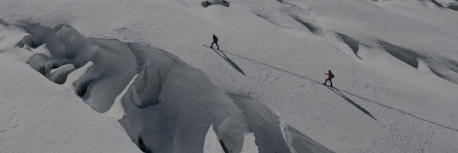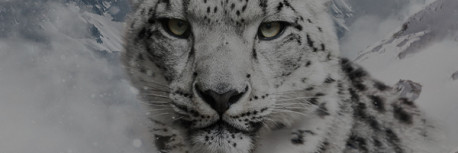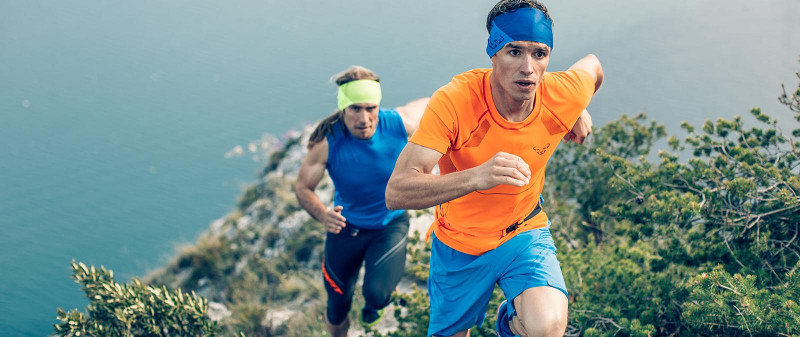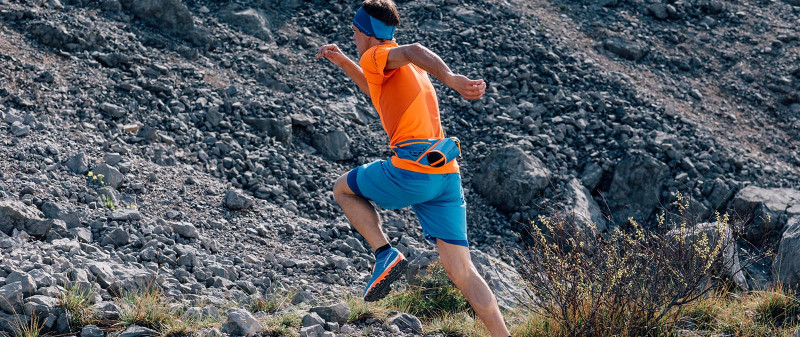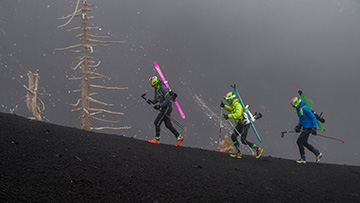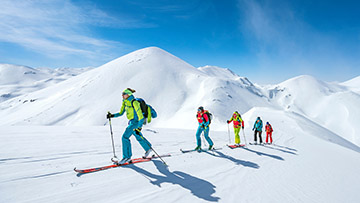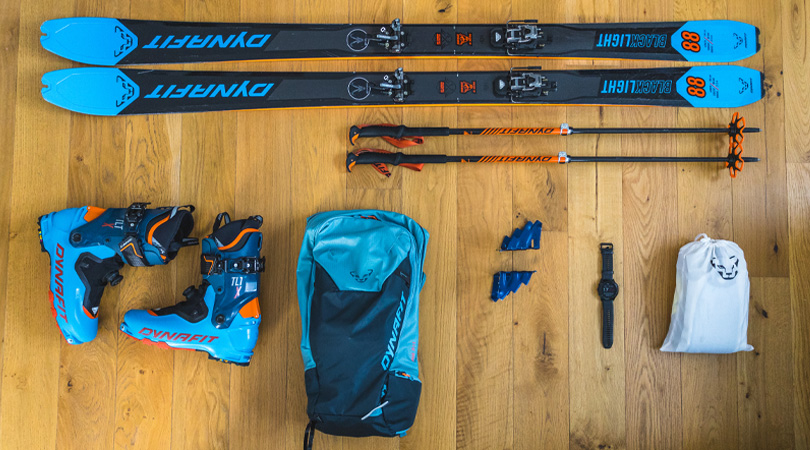Mountain and Trail Running: an overview of the different race series and competition formats
With the growth of our exciting sport of mountain and trail running more disciplines have emerged, leading to the creation of several different ‘series’ or ‘world cups’ that anyone may compete in. However, in contrast to some other established and well-known sports with well-known events, in the case of mountain and trail running, the development of different series and different disciplines has led to some confusion. Who understands the differences between all of these series? And how do they work? Pascal Egli, Dynafit Athlete and winner of the Skyrunning World Series 2018 answers these questions:
Four trail running organizations – the big picture
I heard the question more than once last summer: “You are going to the World Championships? But didn’t they already take place in June?” Well, there are several World Championships. And several running Series. Basically, there are now four entities organizing or patronising mountain and trail running events: The WMRA (World Mountain Running Association), the ITRA (International Trail Running Association), Skyrunning (Migu Run Skyrunner World Series, Vertical Kilometer World Circuit) and the GTS (Golden Trail Series). Additionally, there is also the UTWT (Ultra Trail World Tour) consisting of a series of long distance races (between 100 and 170 kilometers in distance), but in this article I have chosen to focus on faster, short and middle distance races in trail and mountain running.
We have now every year a WMRA World Championships (one for short- and one for long distance), an ITRA trail running World Championship (varies between 42 and approx. 100 km) and every other year a Skyrunning World Championships (with 3 disciplines: Sky, Ultra and Vertical Kilometer).
In addition, there are series or world cups, in which participants complete several races to collect points in order to win the season ranking. Personally, I think this is quite an exciting concept, because you can follow the athletes’ progression over an entire summer!
What kind of trail running series are there?
There are currently three series in short to medium distance trail running:
The Migu Run Skyrunner World Series (SWS)
The SWS comprises technical races between 21 and 76 kilometers long, with significant elevation gains. The SWS emerged from the vision to run up steep mountains, sometimes scrambling and sometimes off-trail, and back down to the village. Skyrunning started in the 1990’s with races up to Monte Rosa (4500 m) and Mont Blanc. All the races in Skyrunning are ‘up-and-down’ and comprise elevation gains of at least 2000 m of vertical gain.
The WMRA World Cup
The WMRA cup has races between 5 and 32 km with signficant elevation gain but limited technicality. Usually it attracts also runners with cross-country and road running backgrounds and therefore the running level in these shorter, less technical races can be very high. The WMRA is the oldest mountain running federation.
The Golden Trail Series (GTS)
The GTS a new series, with the first edition in 2018. It is comprised of trail running races between 22 and 42 km with important elevation gain and variable technical level. The races in the series are all well-known and iconic trail races with a strong field of runners. All races are ‘up-and-down’.
In each series runners can compete in the season ranking if they complete the minimum number of races determined by the series organizers (3-4 races). The Skyrunner World Series now has a final race where only the 30 best skyrunners of the season compete. The Golden Trail Series also has a final race, featuring the season’s 10 best female and male runners. The WMRA has a final race open to everyone.
Migu Run Skyrunner World Series
As a mountain runner with alpinist background, I choose my races not only for the level of competition, but also by several other criteria. I look for technically interesting racecourses, a beautiful alpine setting, opportunities to meet interesting people and an international atmosphere. The SWS races offer all of these. Their philosophy is simple: to start at a village, run up to one or several summits and finish back at the village.
After several years with a variety of different categories, in 2019, the concept of the SWS scoring system is easy to understand! In 2018 there were three categories: Sky Classic, Sky Extra and Overall (combining Classic and Extra), and you could win any of these three series. As an example, the 2018 female winners were Ragna Debats (Overall), Hillary Gerardi (Extra) and Holly Page (Classic). The men’s winners in those categories were Kilian Jornet, Pere Aurell Bove and myself, Pascal Egli.
For 2019, all types of races are put together in ONE series and there can only be one female and one male winner, which is much easier to follow for the public and for the athletes as well. There are 15 races to choose from, plus one final (the ‘Sky Masters’). The races take place in 11 (!) different countries including Japan, Spain, Switzerland, Norway and Bulgaria, and people from more than 30 different nations are participate in each race. The top 20 runners in each race will score points for the series ranking. Among these 15 races there are 4 ‘Super Skyraces’ aiming to assemble the highest and densest level of athletes by attributing bonus points. The points gained in Super Skyraces will count double the points earned in a ‘normal’ skyrace. (e.g. if you win a Super Skyrace, you get 200 points instead of the normal 100 points. If you are second, you still earn 160 points, compared with 80 for a normal skyrace).
In 2019 the super skyraces are: Transvulcania Ultramarathon (76 km, 4000 m d+), Livigno Skymarathon (35 km / 2800 m d+), Buff Epic Trail (42 km, 3000 m d+) and Zermatt Ultraks Extreme (26 km / 2800 m d+).
And how many races count? Maximum four races count: two Super Skyraces and two normal skyraces, plus the final Sky Masters. Of course you can always run more races in order to replace bad results. If you ran four normal skyraces but no Super Skyraces, in the end these four skyraces plus the final (if you qualify) will count for the end result. For the final you can only qualify if you are among the top 20 of the season, or if you finished in podium position or top ten result in one of the races. The final counts with triple points! Therefore, the theoretically best possible result is: winning two super skyraces, winning two normal skyraces and winning the finals. This gives you 2 x 100 plus 2 x 200 plus 1 x 300 points -> 900 points.
The Vertical Kilometer World Circuit
I should note that in addition to the mountain and trail running series mentioned, a VKWC proposed yet another course format. This series is composed of eight vertical races in eight different countries. All the races are purely uphill, with at least 1000 m d+ of vertical gain over a very short distance (2-3 km). There are also bonus races like in the Skyrunner World Series. The athlete with the highest sum of points calculated over five races wins the series. This year two very competitive races are the Transvulcania VK in Spain and the Verticale du Grand Serre in France.
The WMRA World Cup
The WMRA Series is a world cup comprising well-known mountain running races of variable distances. This year, the shortest and fastest race is probably Smarna Gora in Slovenia with 10 km / 700 m d+ (42 min winner time) and the longest race is Sierre-Zinal in Switzerland with 31 km / 2200 m d+ (2h31 min winner time).
As mentioned, the WMRA is the oldest association in mountain running and it was founded in 1984. WMRA World Championships, with distances of around 12 km / 1000 m d+ (one year only uphill, the other year up and down) have the highest and most dense level in worldwide short distance mountain running.
The Golden Trail Series
The GTS has been created with the goal to reunite trail runners with a high level at six iconic ‘marathon’ distance trail races over one season. The races, such as Zegama-Aizkorri Marathon or Sierre-Zinal, have distances ranging from 22 to 42 km and are all ‘up-and-down’ type courses. The top 30 runners of a race collect points depending on their rank. If a runner completes at least three races, the points of her three best races are summed up. The ten runners who collected most points are invited, all expenses paid to the GTS finals in a special destination (e.g. Annapurna/Nepal in 2019).
A promising mountain running future
Starting from the year 2021 joint world championships in trail- and mountain running offering various distances will be organized as a collaboration between the WMRA, the ITRA, the IAAF (International Athletics Federation) and the IUF (International Ultra Runners Federation).
Migu Run Skyrunner World Series:
https://www.skyrunnerworldseries.com/
Vertical Kilometer World Circuit:
https://www.vkworldcircuit.com/
World Mountain Running Association:
Golden Trail Series:
Definition of a skyrace
A skyrace has an elevation gain of at least 1800 m, reaches an elevation of at least 2000 m (some races got an altitude-dispensation if the technical level is high enough), passes over one or several high points or peaks and it starts in the valley and ends in the valley. Typical distances range from 21 km to 42 km, but some races like Tromsø Skyrace can be as long as 55 km (with 4700 m d+!). Skyrace courses imply running over rocky ridges, snow fields, rock slopes, trails, off-trail terrain in general and almost no roads.





